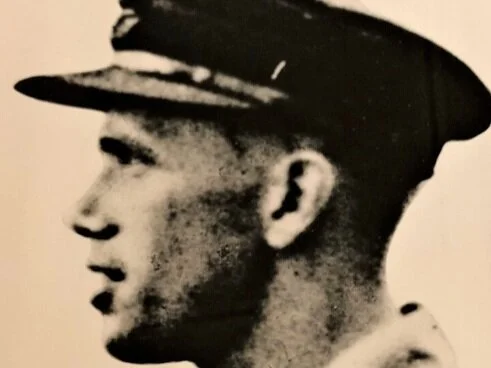
We recognise the bravery and sacrifice of the young men killed at the Battle of Arnhem. Their heroic deeds inspired the post-war link between Arnhem and Croydon which we continue to value today.
There has been a link with Arnhem since the end of the Second World War, although formal Deeds of Twinning were only signed in 1985. Arnhem is a town located in the Netherlands on the banks of the River Rhine. It is most famous for a battle in September 1944 called Operation Market Garden, involving thousands of paratroopers from Britain and Poland. The battle ended in defeat for the Allies with many killed or captured. Arnhem is commemorated in Croydon at the Fairfield Halls (a Gallery was named after Croydon’s twin town, but changed in 2019 to a Foyer) and Arnhem Drive in New Addington.
The twinning of towns which had started as early as the 1920’s, really took off after the end of the Second World War, from links established by returning soldiers and an acknowledgement of the joint suffering of communities across Europe. The purpose of twinning ranges from encouraging friendship to building useful economic and trade partnerships and to the sharing of knowledge.
So why did Croydon and Arnhem choose to link? The main reason is that they were similar in size and importance and had both suffered extensive bomb damage. At a civic level, regular commemorations and meetings take place. However, the central focus was the coming together of organisations such as schools, sports clubs, youth clubs and businesses. The first visit overseas of the Arnhem – Croydon Sports Committee to Arnhem was at Easter 1947. Nearly 75 years have passed since the link began and populations have since undergone massive social, economic and cultural changes.
There are two collections relating to the Croydon-Arnhem link held in our archives (AR72 and AR492). Following the closure of Fairfield Halls for refurbishment in 2016, some items that had hung outside the Arnhem Gallery were transferred to the Museum for safekeeping. They have now been conserved and are on display in the Town Hall..
Explore below to see our Town Hall display of the five Arnhem Victoria Cross winners and final Battle Order.
The Battle of Arnhem, The Last Battle Order
The last battle order on church door at Oosterbeek Arnhem
Donated by Joe Lunt, L/P A.B.F.ASS.
Presented by A.B.Martin, V/PR.B.L. S Norwood Bch.
Flight Lieutenant David Samuel Anthony LORD V.C. D.F.C.
Royal Air Force 271 Squadron Transport Command, Arnhem 1944.
Flight Lieutenant Lord was a pilot and captain of a Dakota aircraft detailed to drop supplied at Arnhem on the afternoon of 19th September 1944.
Major Robert Henry Cain V.C.
2nd South Stafford, Arnhem 1944.
In Holland on the 19th September, 1944, Major Cain was commanding a rifle company of the South Staffordshire Regiment during the battle of Arnhem when his company was cut off from the rest of the battalion during the next six days was closely engaged with enemy tanks, self-propelled guns and infantry.
Lieutenant John Grayburn V.C.
2nd Battalion, The parachute regiment, Arnhem 1944
Lieutenant John Grayburn was a platoon commander of the Parachute Battalion which was dropped on 17th September, 1944, with the task of seizing and holding the bridge over the Rhine at Arnhem.
Captain Lionel Ernest Queripel V.C.
10th Battalion, The Parachute Regiment, Arnhem 1944
At Arnhem on 19th September 1944 Captain Queripel was acting as company commander of a composite company composed of men of three parachute battalions.







